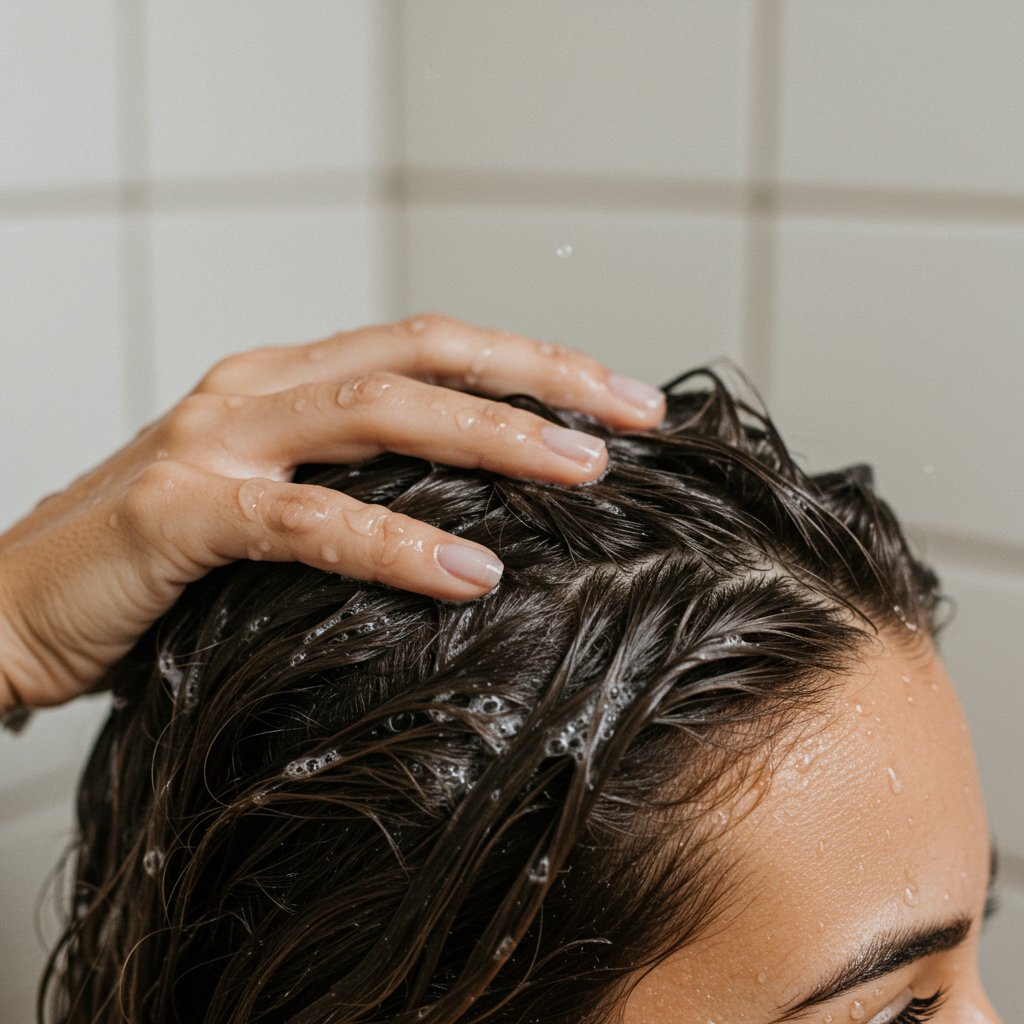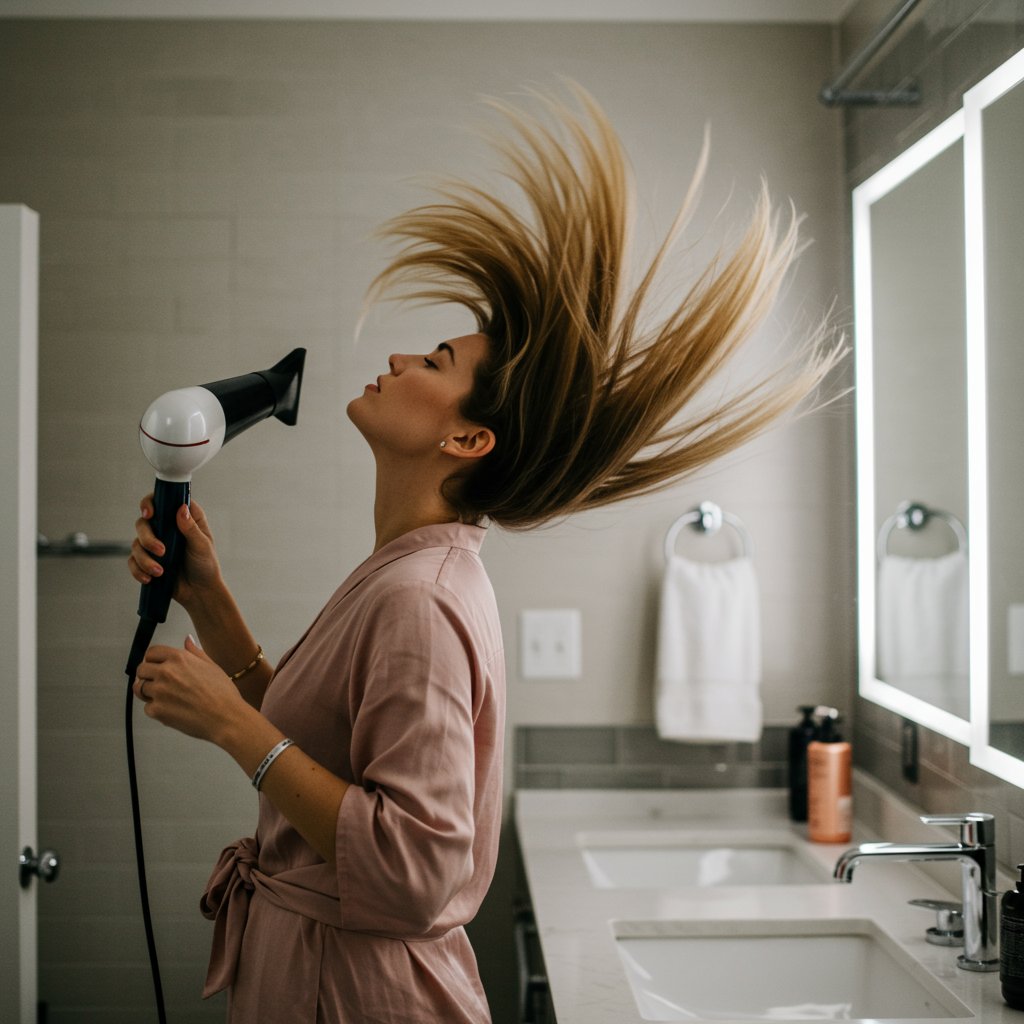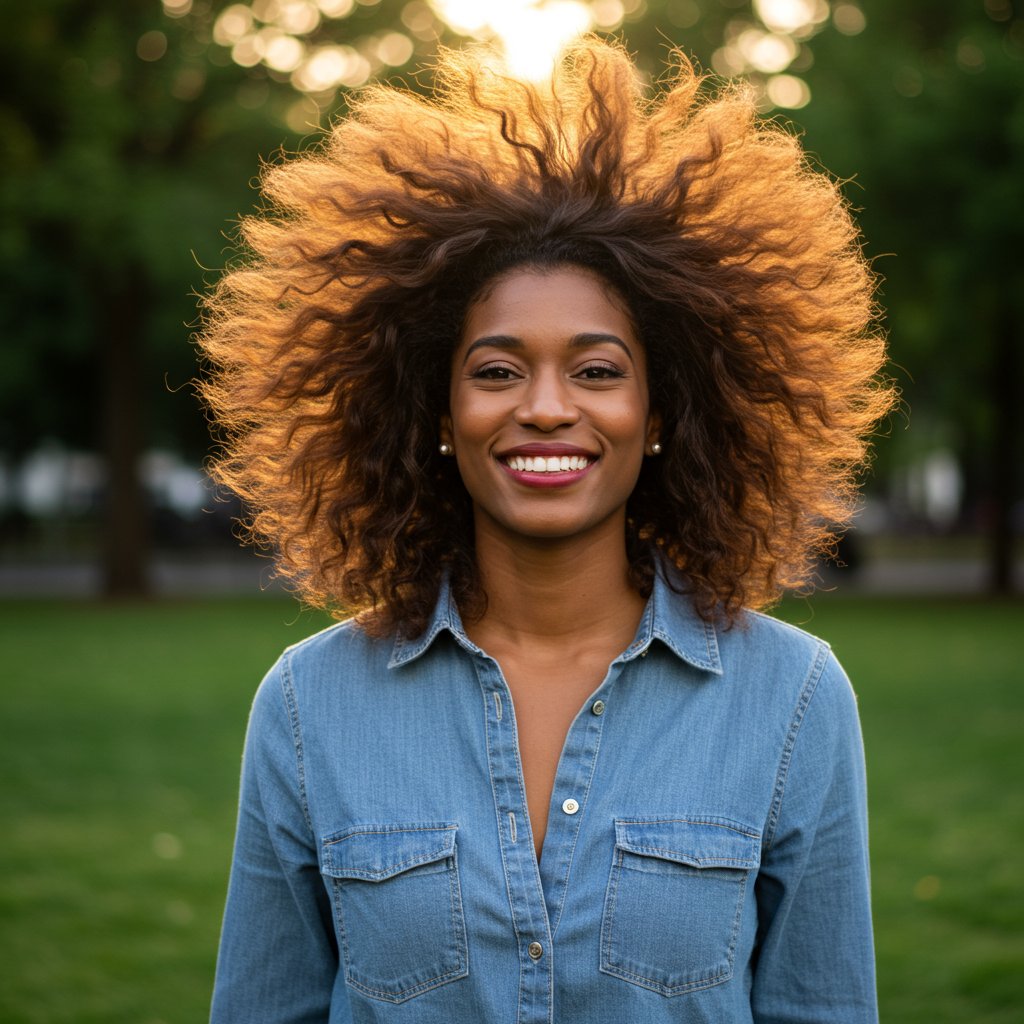Styling Fine Hair for Maximum Volume and Body | The Ultimate Pro Guide
Introduction: Unlocking the Voluminous Potential of Fine Hair
Fine hair is often misunderstood. It’s not necessarily thin, but each individual strand is smaller in diameter than other hair types. This delicate structure means it can easily become weighed down, lie flat against the scalp, and struggle to hold a style. If you've ever spent an hour creating a voluminous look only to have it deflate by lunchtime, you understand the frustration. But achieving lasting lift and body isn't a myth; it's a science and an art form. The key lies in a strategic approach that combines the right haircut, targeted products, and masterful techniques. This guide is your comprehensive roadmap to transforming limp locks into a full, bouncy mane.

Mastering the art of styling fine hair for maximum volume and body is about working with your hair's natural texture, not against it. It involves building a strong foundation, from the way you wash your hair to the direction you point your blow-dryer. Forget about heavy creams and sticky, stiffening hairsprays of the past. Modern hair care offers innovative, lightweight solutions specifically designed to give fine hair the support it needs without the extra weight. By understanding the principles of lift, texture, and hold, you can unlock your hair's true potential and enjoy gorgeous, voluminous styles that last all day. Let's dive into the professional secrets that will elevate your hair game.
The Critical First Step: Understanding Fine vs. Thin Hair
Before you can effectively style your hair, it's crucial to understand what you're working with. The terms "fine" and "thin" are often used interchangeably, but they describe two different characteristics. "Fine hair" refers to the diameter of each individual strand—it's slender and delicate. You can have a lot of fine hair, meaning your hair is dense but the strands themselves are small. "Thin hair," on the other hand, refers to the density of your hair—the number of strands per square inch on your scalp. You can have coarse, thick strands but have thin hair overall because you have fewer of them.

This distinction is vital because the challenges and solutions are different. Fine hair's primary enemy is weight. Its delicate structure is easily overwhelmed by product buildup, natural oils, and even heavy conditioners, causing it to fall flat. Styling fine hair for maximum volume and body requires lightweight products that add texture and grip without sacrificing movement. For thin hair, the goal is often to create the illusion of more hair, which might involve different styling techniques or even cosmetic solutions. Many people have hair that is both fine and thin, which presents a unique set of challenges but also opens the door to a combined strategy of volumizing and thickening.
Understanding your specific hair type allows you to make informed choices. If your hair is fine, you'll prioritize clarifying shampoos, root-lifting sprays, and techniques that lift the hair away from the scalp. You'll learn that less is more when it comes to conditioning and finishing products. By correctly identifying your hair's needs, you stop the cycle of trial and error and start building a routine that consistently delivers the volume and body you desire. An experienced stylist can also help you analyze your hair's texture and density to create a perfectly tailored care and styling plan.
The Foundation: Building Volume with the Right Haircut
A great style starts with a great haircut. For fine hair, the cut is not just about aesthetics; it's the architectural foundation for volume. The wrong cut can accentuate limpness, while the right one can create an immediate illusion of fullness and make daily styling infinitely easier. The goal is to create strong lines and strategic texture that work together to build body from the ground up. This is where consulting with a stylist who specializes in fine hair is an invaluable investment.

The Power of the Blunt Cut
One of the most effective strategies for making fine hair appear thicker is the blunt cut. By cutting the hair to a single, sharp length, you create a solid, weighted line at the ends. This prevents the hair from looking wispy and sparse, which can happen with excessive layering. A classic bob, a sharp lob (long bob), or even a longer style with blunt ends gives the impression of density and health. This clean perimeter makes the entire head of hair look fuller and more substantial, providing a powerful visual trick that works on any length.Strategic, 'Invisible' Layering
While heavy, choppy layers can remove too much weight and make fine hair look thinner, that doesn't mean you must avoid layers altogether. The key is strategic, well-placed layering. Ask your stylist for 'invisible' or 'ghost' layers. These are long, seamless layers cut into the interior of the hair, not the surface. They remove just enough weight to allow the hair to have movement and bounce without sacrificing the strong perimeter. This technique helps the hair from collapsing on itself, creating internal support and lift that makes styling for volume a breeze.Choosing the Ideal Length
Gravity is not a friend to fine hair. The longer your hair gets, the more its own weight will pull it down, making it harder to maintain volume at the roots. For this reason, short to medium-length styles are often the most flattering and manageable. Pixie cuts with longer pieces on top, chic bobs, and playful lobs are all fantastic options. These styles have less weight to contend with, allowing for maximum lift and movement. If you love longer hair, consider keeping it just past the shoulders and incorporating those blunt ends and invisible layers to maintain as much fullness as possible.Pre-Styling Prep: How to Wash and Condition for Lift
Volume begins in the shower. Your washing and conditioning routine sets the stage for your entire style, and for fine hair, it's a make-or-break step. Using the wrong products or techniques can leave a residue that weighs hair down from the start, sabotaging your efforts before you even pick up a blow-dryer. The goal is to achieve a clean, residue-free canvas that is receptive to volumizing products and techniques.

Choose Your Cleansers Wisely
The market is flooded with products, but you must be discerning. Look for shampoos specifically labeled "volumizing" or "thickening." These formulas are designed to be lightweight and often contain ingredients like polymers that gently coat the hair shaft, making each strand feel fuller. Crucially, they are also formulated to cleanse thoroughly without leaving behind heavy residues. Avoid shampoos with heavy silicones, oils, or moisturizing agents, which are better suited for coarse or dry hair. Once a week, consider using a clarifying shampoo to remove any product buildup that might be causing your hair to feel limp and lifeless.The Art of Conditioning
Conditioner is essential for smoothing the cuticle and preventing tangles, but for fine hair, application is everything. Never apply conditioner to your roots. Your scalp produces natural oils, and adding more moisture there will only lead to a flat, greasy look. Instead, concentrate the product from the mid-lengths to the ends, which are the oldest and driest parts of your hair. Use a lightweight, volumizing conditioner and, most importantly, rinse thoroughly. Any conditioner left behind will weigh your hair down. A final rinse with cool water can help seal the cuticle, adding shine without extra product.The Art of the Blow-Dry: Your Blueprint for Building Body
A masterful blow-dry is the single most effective technique for styling fine hair for maximum volume and body. This is where you physically manipulate the hair to defy gravity, creating lift at the root that will support your style all day. It requires the right tools, the right products, and a bit of practice, but the results are transformative. Rushing this process or using the wrong technique is a missed opportunity for incredible volume.

Prep with Purposeful Products
Before any heat touches your hair, you need to apply foundational products to damp, towel-dried strands. Start with a heat protectant—always. Then, apply a volumizing product. A golf-ball-sized amount of mousse, worked from roots to ends, can add all-over body and hold. For more targeted lift, a root-lifting spray is your best friend. Spritz it directly onto the scalp area, section by section, especially at the crown. These products contain polymers that activate with heat, creating a supportive structure around the hair shaft.The Upside-Down Rough-Dry
Don't go straight for the round brush. The first step is to remove about 80% of the moisture from your hair while encouraging root lift. The easiest way to do this is to flip your hair upside down and use your fingers to massage your roots as you blow-dry. This forces the roots to dry in an upward direction, creating a natural and significant amount of initial volume. Use a medium heat setting and keep the dryer moving to avoid concentrating too much heat on one area.Master the Round Brush Technique
Once your hair is mostly dry, it's time for refinement with a round brush. A ceramic or metal barrel brush will heat up, acting like a curling iron to shape the hair, while a boar bristle brush can create excellent tension and shine. Working in manageable sections (about 2 inches wide), place the brush at the root underneath the section. Pull the hair upward and away from your head, creating tension, while you aim the blow-dryer's nozzle (always use the nozzle for concentrated airflow) at the roots. Follow the brush as you pull it through to the ends. For maximum volume at the crown, over-direct the hair—pull it forward towards your face as you dry.Lock It In with the Cool Shot
This is the professional secret that many people skip. After a section is dry and hot from the dryer, switch to the 'cool shot' button and blast the hair at the root for a few seconds while it's still on the brush. Heat shapes the hair, but cool air sets it. This simple step will lock the lift and shape in place, dramatically increasing the longevity of your voluminous style.The Stylist's Toolkit: Essential Products for Fine Hair
Navigating the world of styling products can be overwhelming, but for fine hair, a few key players can make all the difference. The strategy is to choose lightweight products that add texture, grip, and hold without weighing the hair down. Building a small arsenal of effective products will empower you to create and maintain volume effortlessly.

Volumizing Mousse
A modern mousse is nothing like the crunchy, sticky formulas of the 80s. Today's versions are lightweight and airy, designed to coat each strand to make it feel thicker and provide a flexible hold. It's the perfect foundational product to apply to damp hair before blow-drying for all-over body. Look for alcohol-free formulas if you have dry or color-treated hair.Dry Shampoo and Texturizing Sprays
These are the heroes of second-day hair and instant volume. Dry shampoo works by absorbing the oils at the scalp that weigh fine hair down, instantly reviving your style and adding a boost of root lift. You can even use it on clean, dry hair for extra grit and texture. Texturizing sprays are like a combination of dry shampoo and hairspray; they provide a matte, airy texture and a light, piecey separation that makes hair look fuller and more lived-in. Mist it through the mid-lengths and ends and tousle with your fingers.Root Lifting Sprays
For targeted, powerful lift right where you need it, nothing beats a root lifting spray. These are typically applied to damp roots before blow-drying. Their lightweight, non-sticky formulas provide the structural support needed to lift hair off the scalp. This is a must-have product for anyone struggling with flatness at the crown.Advanced Techniques: Pro Secrets for Next-Level Volume
Once you've mastered the basics, you can incorporate a few advanced techniques that stylists use to create camera-ready volume. These methods might take a little extra time, but they provide incredible hold and structure for special occasions or when you want your hair to look its absolute best.

The Enduring Magic of Velcro Rollers
Velcro rollers are a gentle, effective way to set volume. After your blow-dry, while your hair is still slightly warm, take 2-3 inch sections at the crown and roll them away from your face. The larger the roller, the more volume and less curl you'll get. Let them sit for at least 10-20 minutes as your hair cools completely (or give them a quick blast of cool air). When you remove them, your roots will have a soft, incredible lift that lasts for hours.Modern, Damage-Free Backcombing
Forget the aggressive teasing that damages hair. Modern backcombing is gentle and targeted. Take a small section of hair at the crown, hold it straight up, and use a fine-tooth comb or a teasing brush to gently push the hair down towards the root just once or twice. Do this on the underlying sections, not the top layer. This creates a hidden cushion of support that props up the surface hair, creating instant, invisible volume. Gently smooth the top layer over the teased section to finish.The Hidden Crimp
This is a well-guarded industry secret. Using a micro-crimper (a crimping iron with very small, tight plates), take a few small, hidden sections of hair at the root, right next to the scalp. Crimp just the first inch of the hair. Leave the top layer of hair smooth. The zig-zag texture of the crimped under-layers acts like a scaffold, pushing the top layers up and away from the scalp for major, durable volume that no one will know is there.Quick Tips: Everyday Hacks for Instant Volume
- Switch Your Part: The simplest trick in the book. Your hair gets used to lying in one direction. By flipping it to the other side, you create instant lift at the roots.
- Sleep Smart: Gather your hair into a loose, high ponytail or bun on top of your head (a 'pineapple') using a gentle scrunchie. This keeps your roots lifted overnight so you wake up with natural volume.
- Use Dry Shampoo Proactively: Don't wait until your hair is oily. Apply a small amount of dry shampoo to your clean, dry roots as a preventative measure. It will create texture and absorb oils as they appear.
- The Midday Flip: When your hair starts to fall flat during the day, flip your head upside down, massage your roots with your fingertips, and flip back up for a quick refresh.
- Scalp Massage: A regular scalp massage can help stimulate blood flow to the follicles, which can promote healthy growth and help lift the roots off the scalp.

Frequently Asked Questions (FAQ)
Q1: How often should I wash my fine hair?
Fine hair tends to show oil more quickly, so many people find they need to wash it daily or every other day to maintain volume. However, overwashing can strip natural oils. The key is to use a gentle, volumizing shampoo and focus the lather on the scalp.
Q2: Will coloring or highlighting my hair make it look fuller?
Yes, it can. The chemical process of coloring and highlighting swells the hair cuticle, making each strand physically thicker. The multi-dimensional tones of highlights also create an optical illusion of depth and fullness. A professional colorist can use strategic placement to enhance this effect.Q3: Are hair extensions a good option for fine hair?
They can be, but it's critical to choose the right type and have them applied by a certified professional who specializes in fine hair. Tape-ins and keratin-bond extensions that use very small, lightweight bonds are often better options than heavier wefts, which can cause strain and damage to delicate strands.Q4: Can diet affect my hair's volume?
A healthy diet rich in protein, biotin, iron, and other essential vitamins is the foundation for strong, healthy hair growth. While it won't change the fine texture of your strands, it can help prevent hair loss and ensure your hair is as healthy and resilient as possible, which contributes to its overall appearance of fullness.Q5: Do I need to use heat protectant even on fine hair?
Absolutely. In fact, it's even more important for fine hair. The delicate structure of fine strands makes them more susceptible to damage from heat styling. A lightweight heat protectant spray is a non-negotiable step to prevent breakage and split ends that can make fine hair look thinner.Q6: What's the biggest mistake people make when styling fine hair?
The most common mistake is using too much product, or products that are too heavy. Fine hair is easily weighed down, so a 'less is more' approach is best. Start with a smaller amount of product than you think you need and add more only if necessary. Choosing lightweight, volumizing formulas is key.Conclusion: Embrace Your Hair's Full Potential
Achieving beautiful, lasting volume with fine hair is not an impossible dream. It is a skill that can be learned and perfected. By embracing a holistic approach that starts with the right haircut and continues with a mindful washing routine, purposeful product selection, and masterful styling techniques, you can completely transform your hair. The journey from flat to full is about understanding the unique nature of your hair and giving it the specific care and support it needs to thrive.
Remember that consistency is key. Incorporate these strategies into your regular routine, and you will see a remarkable difference in your hair's body and bounce. Don't be afraid to experiment with different products and techniques to find what works best for you. And when in doubt, consult a professional stylist. They can provide personalized advice and a haircut that serves as the perfect canvas for all your volumizing efforts. With the right knowledge and tools, you can confidently create stunning, voluminous styles and love your fine hair every single day.


